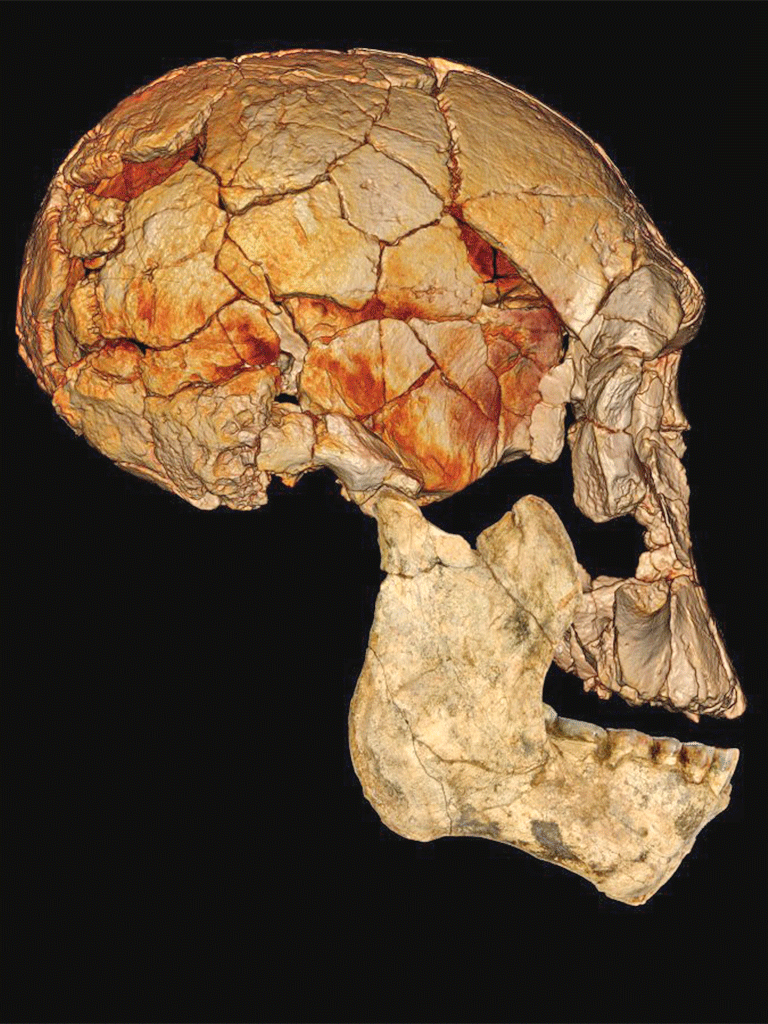Fossil discovery rewrites the story of human evolution

Your support helps us to tell the story
From reproductive rights to climate change to Big Tech, The Independent is on the ground when the story is developing. Whether it's investigating the financials of Elon Musk's pro-Trump PAC or producing our latest documentary, 'The A Word', which shines a light on the American women fighting for reproductive rights, we know how important it is to parse out the facts from the messaging.
At such a critical moment in US history, we need reporters on the ground. Your donation allows us to keep sending journalists to speak to both sides of the story.
The Independent is trusted by Americans across the entire political spectrum. And unlike many other quality news outlets, we choose not to lock Americans out of our reporting and analysis with paywalls. We believe quality journalism should be available to everyone, paid for by those who can afford it.
Your support makes all the difference.The history of human evolution is more complex than previously supposed, according to fossils showing that several species of early man once lived cheek by jowl in the same region of East Africa.
Scientists have excavated three new fossils – a face and two jawbone fragments – indicating that at least two other species of human lived between 1.78m and 1.95m years ago at the same time as our direct ancestors. The discovery emphasises the complicated nature of human evolution, which has been likened to an intricate family tree of related species rather than a simple sequential line of direct descent.
The new fossils were found by a team led by Maeve Leakey of the Turkana Basin Institute in Nairobi and belong to individuals who were markedly different from Homo erectus, which is believed to be the direct ancestor of anatomically modern humans, Homo sapiens.
The three fossils were unearthed to the east of Lake Turkana in Kenya within a few miles of another fossilised face of an early human, known simply as "1470", which has puzzled scientists since it was discovered in 1972. The skull of 1470, dated to 2.03m years ago, has a strikingly long and flat face with a large brain. This set it apart from other fossils found at that time in Tanzania, which belong to an early human species called Homo habilis or "handy man".
This led some experts to describe 1470 as a new early species, Homo rudolfensis, while other scholars claimed it was just an extreme variant of Homo habilis. The dispute could not be resolved because the 1470 fossil lacked the teeth that could decide the issue.
The latest finds, published in the journal Nature, confirm that 1470 is a different species. The new fossilised face is almost identical to 1470, although smaller, and crucially has a set of back teeth that show it was a distinct species with a specialised, plant-eating diet, said Fred Spoor of the Max Planck Institute for Evolutionary Anthropology in Leipzig, Germany.
"Combined, the three new fossils give a much clearer picture of what 1470 looked like. As a result, it is now clear that two species of early Homo lived alongside Homo erectus. The new fossils will greatly help in unravelling how our branch of human evolution emerged and flourished almost two million years ago."
Dr Leakey said the new bones were found in 2007 and 2009. One jawbone is the most complete of any early Homo. "The fossils... enable us to separate the collection of non-Homo erectus fossils into two groups with clear, distinguishing characters," she said.
Join our commenting forum
Join thought-provoking conversations, follow other Independent readers and see their replies
Comments